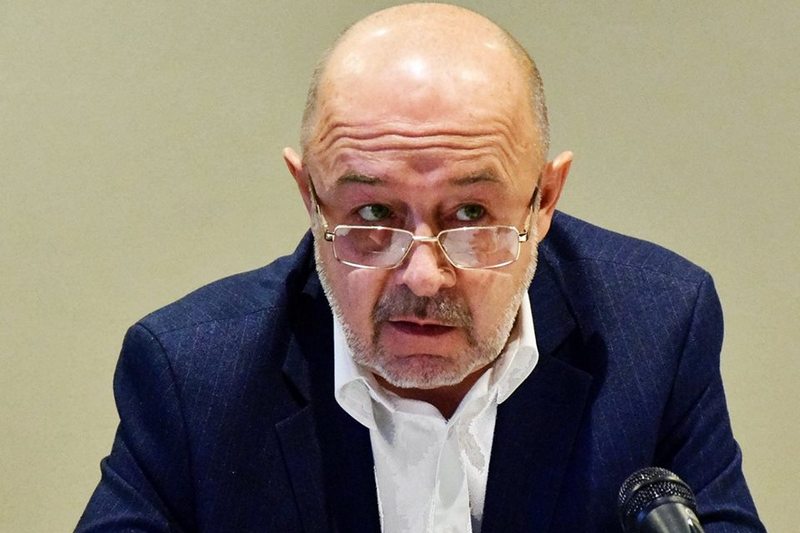“A statement by the chief of the Kyrgyz State Committee for National Security Kamchybek Tashiyev regarding Tajikistan’s Vorukh exclave is provocative: offer what is a priori unacceptable to the other side means deliberately leading the entire negotiation process to a dead end. And if not consciously, then this should indicate just absolute incompetence and inability to objectively assess what is happening,” Russian political scientist Alexander Knyazev told Asia-Plus in an interview.
At the same time, he noted that silence of the Tajik side in this situation - unconstructive, to put it mildly, behavior of the Kyrgyz side -- looks justified. “There is no need to further exacerbate already virtually unsolvable problems,” the Russian expert noted.
“However, this statement, according to my observations, has rapidly and very sharply exacerbated anti-Kyrgyz nationalist content among Tajikistanis, irrespective of an official position of Dushanbe. I think the corresponding reaction will not be long in coming from the Kyrgyz side either, which means that the general degree of conflict potential will increase,” Knyazev said.
According to him, neither the Kyrgyz side nor the Tajik side is ready to solve these problems, since the accumulation of contradictions at different levels, from personal, everyday to inter-country contradictions, has been going on for too long.
“The only way to solve such border-territorial problems is the coordinated exchange of equivalent disputed land plots. There are no other options, but now it also looks unlikely, especially given the not always adequate behavior of officials. Both sides have no resources for a civilized exchange with the provision of the necessary compensation to the population, and this will inevitably give rise to new conflicts, which in each case will have a social nature, but will surely be interpreted with usage of the guilty image,” Knyazev noted.
According to him, it is not difficult to guess who the Kyrgyz will blame and who the Tajik population will blame.
“They need painstaking and step-by-step work, and at least one positive precedent for exchange of land plots is needed, to which could later be appealed and continue this difficult, but, I emphasize again, the only possible work,” Russian political scientist said.
Recall, Dushanbe and Bishkek began discussing possible land exchange issue to resolve the long-festering border disputes in January last year. Tajik and Kyrgyz officials held talks on border issues on January 14, 2020 following another round of clashes between Kyrgyz and Tajiks residing close to a disputed segment of the two countries’ share border. The two sides reportedly agreed to start the process of a land swap along a disputed segment of the mutual border, but this issue remained unresolved.
As far as the statement by Kamchybek Tashiyev is concerned, he told reporters in Bishkek on March 26 that Kyrgyzstan proposed to exchange Vorukh enclave for land plots in Leilek and Batken districts.
According to him, negotiations with Tajikistan on delimitation of the state border continue. “We have a disputed moment — Vorukh enclave. We propose to define the border of the enclave so that it does not increase, and we are ready to provide a road bypassing Ak-Sai village. Or exchange the enclave for other land plots in Leilek and Batken districts,” Kamchybek Tashiyev said, according to 24.kg.
Vorukh is a jamoat in northern Tajikistan, which is an exclave surrounded by Kyrgyzstan and subordinate to the Tajik northern city of Isfara.
Tajik President Emomali Rahmon is expected to visit Vorukh as part of his working visit to the northern Sughd province next week.
It is to be noted that many border areas in Central Asia have been disputed since the collapse of the Soviet Union in 1991. The situation is particularly complicated near the numerous exclaves in the Ferghana Valley, where the borders of Tajikistan, Uzbekistan, and Kyrgyzstan meet.
The location of the border of the Vorukh exclave is disputed by the Tajik and Kyrgyz governments
The border of Tajikistan and Kyrgyzstan has been the scene of unrest repeatedly since the collapse of the former Soviet Union.
Border talks between Tajikistan and Kyrgyzstan began in 2002. The countries share 976 kilometers of border – of which only 504 kilometers has reportedly been properly delineated.
In 2019 alone, there were at least fourteen cases of violence, in which six Tajik nationals and one Kyrgyz citizen were killed and more than 60 other people were injured.
Tajikistan and Kyrgyzstan renewed interest in border delimitation suggests that the governments want to dedicate more attention and resources to the communities living in the Ferghana Valley.







